A Flight Parameter-Based Aircraft Structural Load Monitoring Method Using a Genetic Algorithm Enhanced Extreme Learning Machine
Abstract
1. Introduction
2. Extreme Learning Machine Improved by Genetic Algorithm
2.1. Extreme Learning Machine Neural Network
2.2. Genetic Algorithm Enhanced ELM
- The processing object of the GA is not the parameter itself of the optimization problem but the individual that encodes the parameter set;
- The basic action object of the genetic algorithm is a set of multiple feasible solutions, not a single feasible solution;
- The genetic algorithm only uses the fitness function value to evaluate the individual without the knowledge of the search space or other auxiliary information;
- The genetic algorithm does not use deterministic rules but uses probabilistic transition rules to guide its search direction.
3. Determination of Input Parameters and Neuron Number of the Hidden Layer
3.1. Mean Impact Value Method
3.2. Determination of Neuro Number K in the Hidden Layer
4. Flight Load Prediction Case Study
4.1. Investigation of Different Activation Functions
4.2. Genetic Algorithm Enhanced ELM
4.3. Determination of Neuron Number of Hidden Layer
4.4. Sensitivity Analysis of Flight Parameters
4.5. Comparison with Other Neural Networks
5. Conclusions
- (1)
- The ELM method is an effective tool to establish a flight-parameter-based flight load prediction model even when some weights are randomly generated.
- (2)
- A genetic algorithm is an effective global optimization algorithm, which can be used to optimize the parameters of the neural networks.
- (3)
- The mean impact value method can effectively select the highly correlated flight parameters for accurate flight load prediction, and it is applicable to all neural networks.
- (4)
- The neuron number in the hidden layer should not be too small and is suggested to be a little large as long as the computation cost is affordable.
Author Contributions
Funding
Institutional Review Board Statement
Informed Consent Statement
Data Availability Statement
Conflicts of Interest
References
- Kaneko, H.; Furukawa, T. Operational loads regression equation development for advanced fighter aircraft. In Proceedings of the ICAS 24th International Congress of the Aeronautical Sciences, Yokohama, Japan, 29 August–3 September 2004; pp. 1–9. [Google Scholar]
- Zhu, S.; Wang, Y. Scaled sequential threshold least-squares (s2tls) algorithm for sparse regression modeling and flight load prediction. Aerosp. Sci. Technol. 2019, 85, 514–528. [Google Scholar] [CrossRef]
- Tikka, J. Flight parameter based fatigue analysis approach for a fighter aircraft. Aeronaut. J. 2008, 112, 79–91. [Google Scholar] [CrossRef]
- Raab, C.; Rohde-Brandenburger, K. Dynamic flight load measurements with mems pressure sensors. CEAS Aeronaut. J. 2021, 12, 737–753. [Google Scholar] [CrossRef]
- Rui, J.; Xiaofan, H.; Yuhai, L. Individual aircraft life monitoring: An engineering approach for fatigue damage evaluation. Chin. J. Aeronaut. 2018, 31, 727–739. [Google Scholar]
- de Camargo Branco, D.; de Silva Bussamra, F.L. Fatigue life monitoring system for aircraft to flexibilize operations and maintenance planning. J. Aircr. 2016, 53, 1298–1304. [Google Scholar] [CrossRef]
- Jeong, S.H.; Lee, K.B.; Ham, J.H.; Kim, J.H.; Cho, J.Y. Estimation of maximum strains and loads in aircraft landing using artificial neural network. Int. J. Aeronaut. Space Sci. 2020, 21, 117–132. [Google Scholar] [CrossRef]
- Nicolas, M.J.; Sullivan, R.W.; Richards, W.L. Large scale applications using fbg sensors: Determination of in-flight loads and shape of a composite aircraft wing. Aerospace 2016, 3, 18. [Google Scholar] [CrossRef]
- Reed, S. Development of a parametric-based indirect aircraft structural usage monitoring system using artificial neural networks. Aeronaut. J. 2007, 111, 209–230. [Google Scholar] [CrossRef]
- Sharan, A.; Vijayaraju, K.; James, D. Synthesis of in-flight strains using flight parameters for a fighter aircraft. J. Aircr. 2013, 50, 469–477. [Google Scholar] [CrossRef]
- Dziendzikowski, M.; Kurnyta, A.; Reymer, P.; Kurdelski, M.; Klysz, S.; Leski, A.; Dragan, K. Application of operational load monitoring system for fatigue estimation of main landing gear attachment frame of an aircraft. Materials 2021, 14, 6564. [Google Scholar] [CrossRef]
- Park, C.Y.; Ko, M.-G.; Kim, S.-Y.; Ha, J.-S. Flight test applications of an improved operational load monitoring device. Int. J. Aeronaut. Space Sci. 2020, 21, 970–983. [Google Scholar] [CrossRef]
- Lin, M.; Guo, S.; He, S.; Li, W.; Yang, D. Structure health monitoring of a composite wing based on flight load and strain data using deep learning method. Compos. Struct. 2022, 286, 115305. [Google Scholar] [CrossRef]
- Coates, C.W.; Thamburaj, P. Inverse method using finite strain measurements to determine flight load distribution functions. J. Aircr. 2008, 45, 366–370. [Google Scholar] [CrossRef]
- Zhang, S.; Yang, J.; Li, Y.; Li, J. Identification of bearing load by three section strain gauge method: Theoretical and experimental research. Measurement 2013, 46, 3968–3975. [Google Scholar] [CrossRef]
- Halle, M.; Thielecke, F.; Lindenau, O. Comparison of real-time flight loads estimation methods. CEAS Aeronaut. J. 2014, 5, 501–513. [Google Scholar] [CrossRef]
- Cheung, C.; Valdés, J.J.; Li, M. Exploration of flight state and control system parameters for prediction of helicopter loads via gamma test and machine learning techniques. In Real World Data Mining Applications; Springer: Cham, Switzerland, 2015; pp. 359–385. [Google Scholar]
- Kim, J.-H.; Park, Y.; Kim, Y.-Y.; Shrestha, P.; Kim, C.-G. Aircraft health and usage monitoring system for in-flight strain measurement of a wing structure. Smart Mater. Struct. 2015, 24, 105003. [Google Scholar] [CrossRef]
- Candon, M.; Esposito, M.; Fayek, H.; Levinski, O.; Koschel, S.; Joseph, N.; Carrese, R.; Marzocca, P. Advanced multi-input system identification for next generation aircraft loads monitoring using linear regression, neural networks and deep learning. Mech. Syst. Signal Process. 2022, 171, 108809. [Google Scholar] [CrossRef]
- Montel, M.; Thielecke, F. Efficient and accurate technology for aircraft loads estimation. CEAS Aeronaut. J. 2020, 11, 461–474. [Google Scholar] [CrossRef]
- Krings, M.; Thielecke, F. A predictive envelope protection system using linear, parameter-varying models. CEAS Aeronaut. J. 2015, 6, 95–108. [Google Scholar] [CrossRef]
- Dong, Y.; Tao, J.; Zhang, Y.; Lin, W.; Ai, J. Deep learning in aircraft design, dynamics, and control: Review and prospects. IEEE Trans. Aerosp. Electron. Syst. 2021, 57, 2346–2368. [Google Scholar] [CrossRef]
- Cao, X.; Sugiyama, Y.; Mitsui, Y. Application of artificial neural networks to load identification. Comput. Struct. 1998, 69, 63–78. [Google Scholar] [CrossRef]
- Li, H.; Zhang, Q.; Chen, X. Deep learning-based surrogate model for flight load analysis. Comput. Model. Eng. Sci. 2021, 128, 605–621. [Google Scholar] [CrossRef]
- Reed, S.C. Indirect aircraft structural monitoring using artificial neural networks. Aeronaut. J. 2008, 112, 251–265. [Google Scholar] [CrossRef]
- Halle, M.; Thielecke, F. Local model networks applied to flight loads estimation. In Proceedings of the 31st Congress of the International Council of the Aeronautical Sciences, Belo Horizonte, Brazil, 9–14 September 2018; pp. 1–10. [Google Scholar]
- Van Gerven, M.; Bohte, S. Artificial Neural Networks as Models of Neural Information Processing; Frontiers Media, S.A.: Lausanne, Switzerland, 2017; p. 114. [Google Scholar]
- Guliyev, N.J.; Ismailov, V.E. On the approximation by single hidden layer feedforward neural networks with fixed weights. Neural Netw. 2018, 98, 296–304. [Google Scholar] [CrossRef]
- Cao, W.; Wang, X.; Ming, Z.; Gao, J. A review on neural networks with random weights. Neurocomputing 2018, 275, 278–287. [Google Scholar] [CrossRef]
- Huang, G.; Huang, G.-B.; Song, S.; You, K. Trends in extreme learning machines: A review. Neural Netw. 2015, 61, 32–48. [Google Scholar] [CrossRef] [PubMed]
- Laudani, A.; Lozito, G.M.; Fulginei, F.R.; Salvini, A. On training efficiency and computational costs of a feed forward neural network: A review. Comput. Intell. Neurosci. 2015, 2015, 83. [Google Scholar] [CrossRef]
- Ojha, V.K.; Abraham, A.; Snášel, V. Metaheuristic design of feedforward neural networks: A review of two decades of research. Eng. Appl. Artif. Intell. 2017, 60, 97–116. [Google Scholar] [CrossRef]
- Abiodun, O.I.; Jantan, A.; Omolara, A.E.; Dada, K.V.; Mohamed, N.A.; Arshad, H. State-of-the-art in artificial neural network applications: A survey. Heliyon 2018, 4, e00938. [Google Scholar] [CrossRef]
- Schmidhuber, J. Deep learning in neural networks: An overview. Neural Netw. 2015, 61, 85–117. [Google Scholar] [CrossRef]
- Huang, H.-X.; Li, J.-C.; Xiao, C.-L. A proposed iteration optimization approach integrating backpropagation neural network with genetic algorithm. Expert Syst. Appl. 2015, 42, 146–155. [Google Scholar] [CrossRef]
- Huang, G.-B.; Zhou, H.; Ding, X.; Zhang, R. Extreme learning machine for regression and multiclass classification. IEEE Trans. Syst. Man Cybern. Part B 2011, 42, 513–529. [Google Scholar] [CrossRef] [PubMed]
- Tang, J.; Deng, C.; Huang, G.-B. Extreme learning machine for multilayer perceptron. IEEE Trans. Neural Netw. Learn. Syst. 2015, 27, 809–821. [Google Scholar] [CrossRef] [PubMed]
- Zhao, H.; Liu, H.; Xu, J.; Deng, W. Performance prediction using high-order differential mathematical morphology gradient spectrum entropy and extreme learning machine. IEEE Trans. Instrum. Meas. 2019, 69, 4165–4172. [Google Scholar] [CrossRef]
- Chen, H.; Zhang, Q.; Luo, J.; Xu, Y.; Zhang, X. An enhanced bacterial foraging optimization and its application for training kernel extreme learning machine. Appl. Soft Comput. 2020, 86, 105884. [Google Scholar] [CrossRef]
- Pan, Z.; Meng, Z.; Chen, Z.; Gao, W.; Shi, Y. A two-stage method based on extreme learning machine for predicting the remaining useful life of rolling-element bearings. Mech. Syst. Signal Process. 2020, 144, 106899. [Google Scholar] [CrossRef]
- Wang, J.; Lu, S.; Wang, S.-H.; Zhang, Y.-D. A review on extreme learning machine. Multimed. Tools Appl. 2022, 81, 41611–41660. [Google Scholar] [CrossRef]
- Chen, Z.; Gryllias, K.; Li, W. Mechanical fault diagnosis using convolutional neural networks and extreme learning machine. Mech. Syst. Signal Process. 2019, 133, 106272. [Google Scholar] [CrossRef]
- Feng, K.; Ji, J.; Ni, Q. A novel adaptive bandwidth selection method for vold–kalman filtering and its application in wind turbine planetary gearbox diagnostics. Struct. Health Monit. 2022, 22, 1027–1048. [Google Scholar] [CrossRef]
- Lee, S.; Kim, S.B. Parallel simulated annealing with a greedy algorithm for bayesian network structure learning. IEEE Trans. Knowl. Data Eng. 2020, 32, 1157–1166. [Google Scholar] [CrossRef]
- Yuan, S.J.; Xu, Y.J.; Mu, B.; Zhang, L.L.; Ren, J.H.; Ma, S.Y.; Duan, W.S. An improved continuous tabu search algorithm with adaptive neighborhood radius and increasing search iteration times strategies. Int. J. Artif. Intell. Tools 2021, 30, 2150001. [Google Scholar] [CrossRef]
- Veksler, B.Z.; Morris, M.B.; Krusmark, M.A.; Gunzelmann, G. Integrated modeling of fatigue impacts on c-17 approach and landing performance. Int. J. Aerosp. Psychol. 2023, 33, 61–78. [Google Scholar]
- Huang, G.-B.; Zhu, Q.-Y.; Siew, C.-K. Extreme learning machine: Theory and applications. Neurocomputing 2006, 70, 489–501. [Google Scholar] [CrossRef]
- Ding, S.; Zhao, H.; Zhang, Y.; Xu, X.; Nie, R. Extreme learning machine: Algorithm, theory and applications. Artif. Intell. Rev. 2015, 44, 103–115. [Google Scholar] [CrossRef]
- Katoch, S.; Chauhan, S.S.; Kumar, V. A review on genetic algorithm: Past, present, and future. Multimed. Tools Appl. 2021, 80, 8091–8126. [Google Scholar] [CrossRef]
- Ding, S.; Su, C.; Yu, J. An optimizing bp neural network algorithm based on genetic algorithm. Artif. Intell. Rev. 2011, 36, 153–162. [Google Scholar] [CrossRef]
- Zhang, X.; Jiang, Y.; Zhong, W. Prediction research on irregularly cavitied components volume based on gray correlation and pso-svm. Appl. Sci. 2023, 13, 1354. [Google Scholar] [CrossRef]
- Chen, Y.; Shi, G.; Jiang, H.; Zheng, T. Research on the prediction of insertion resistance of wheel loader based on pso-lstm. Appl. Sci. 2023, 13, 1372. [Google Scholar] [CrossRef]
- Wu, T.; Wang, M.; Xi, Y.; Zhao, Z. Malicious url detection model based on bidirectional gated recurrent unit and attention mechanism. Appl. Sci. 2022, 12, 12367. [Google Scholar] [CrossRef]
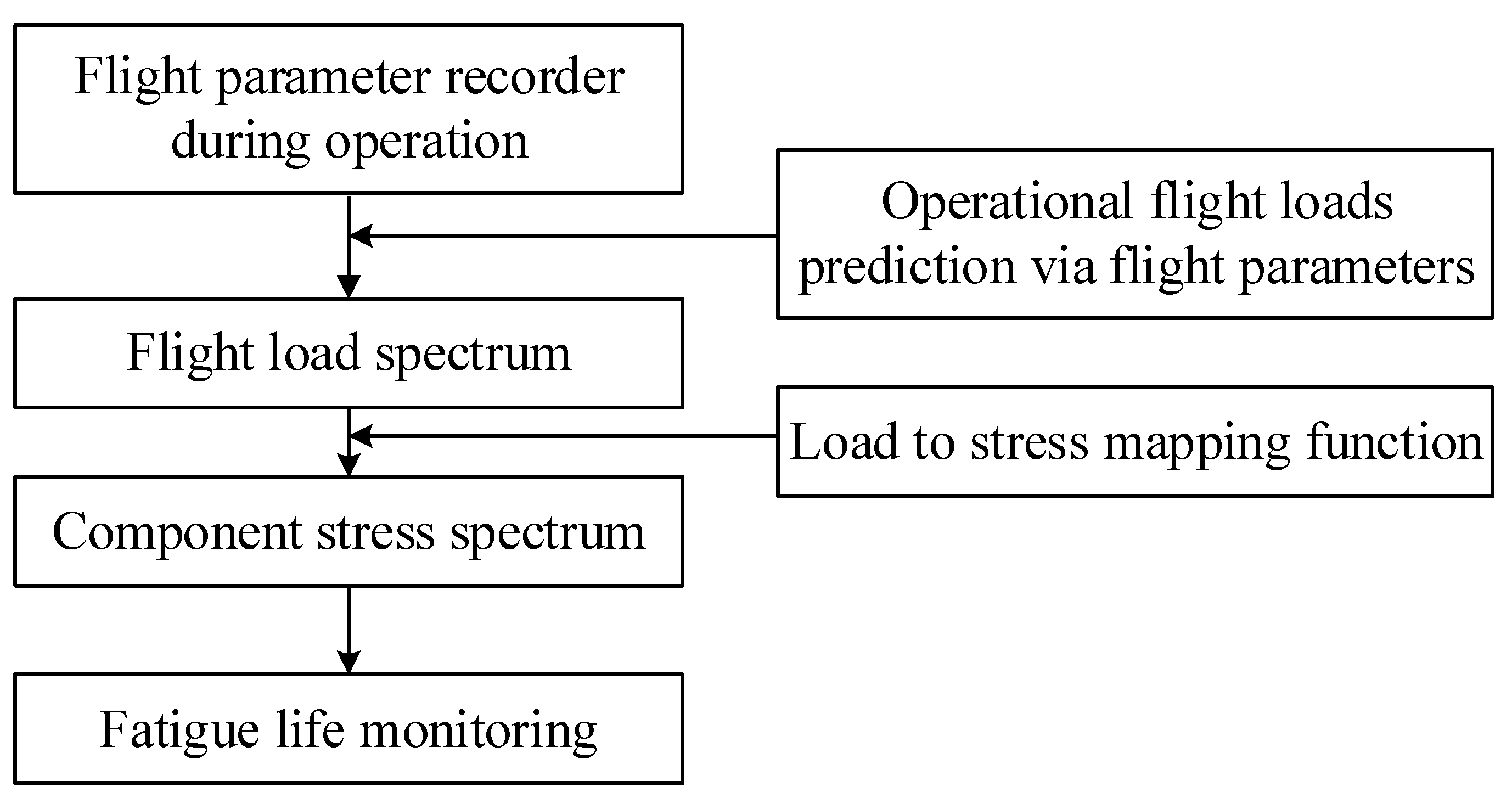

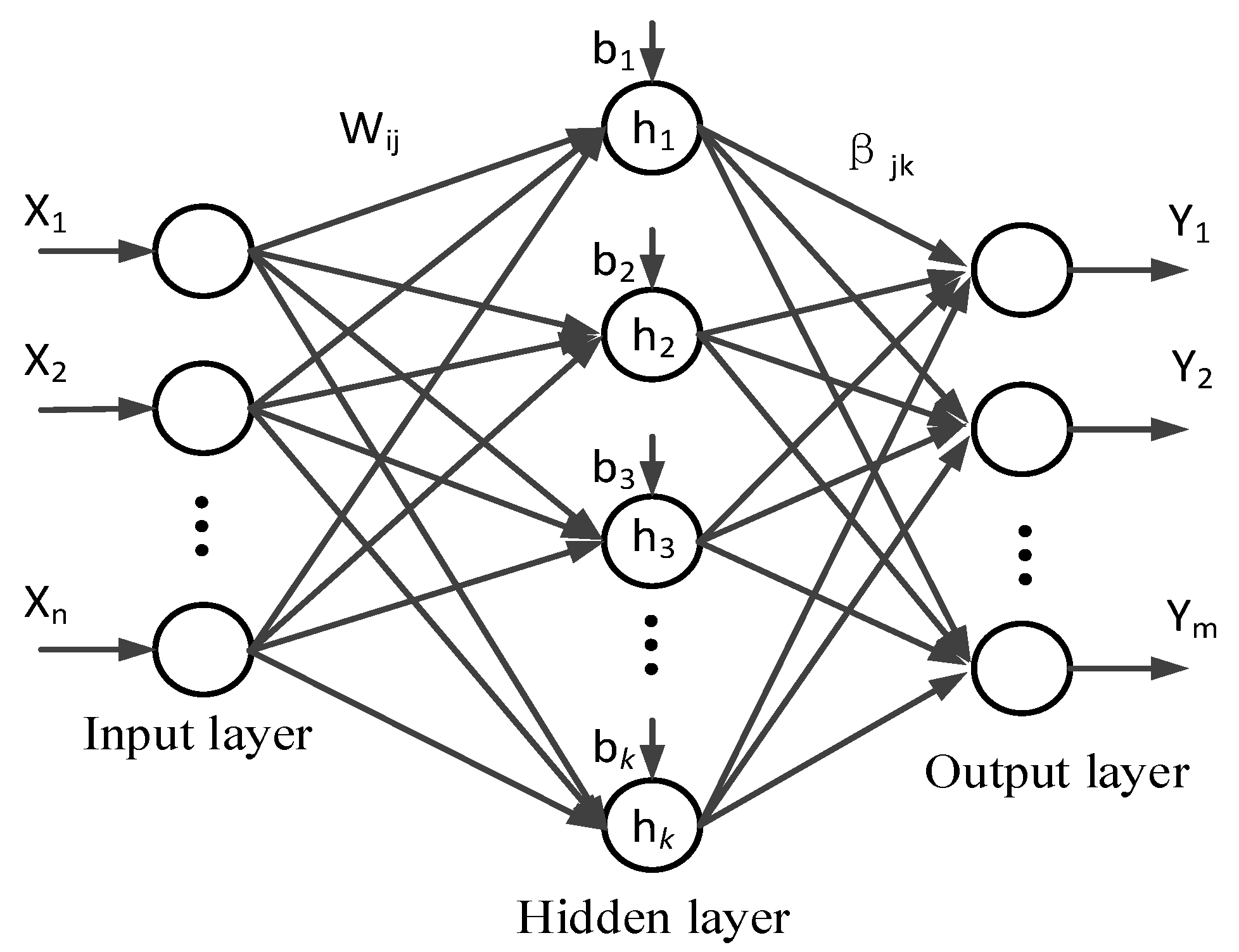

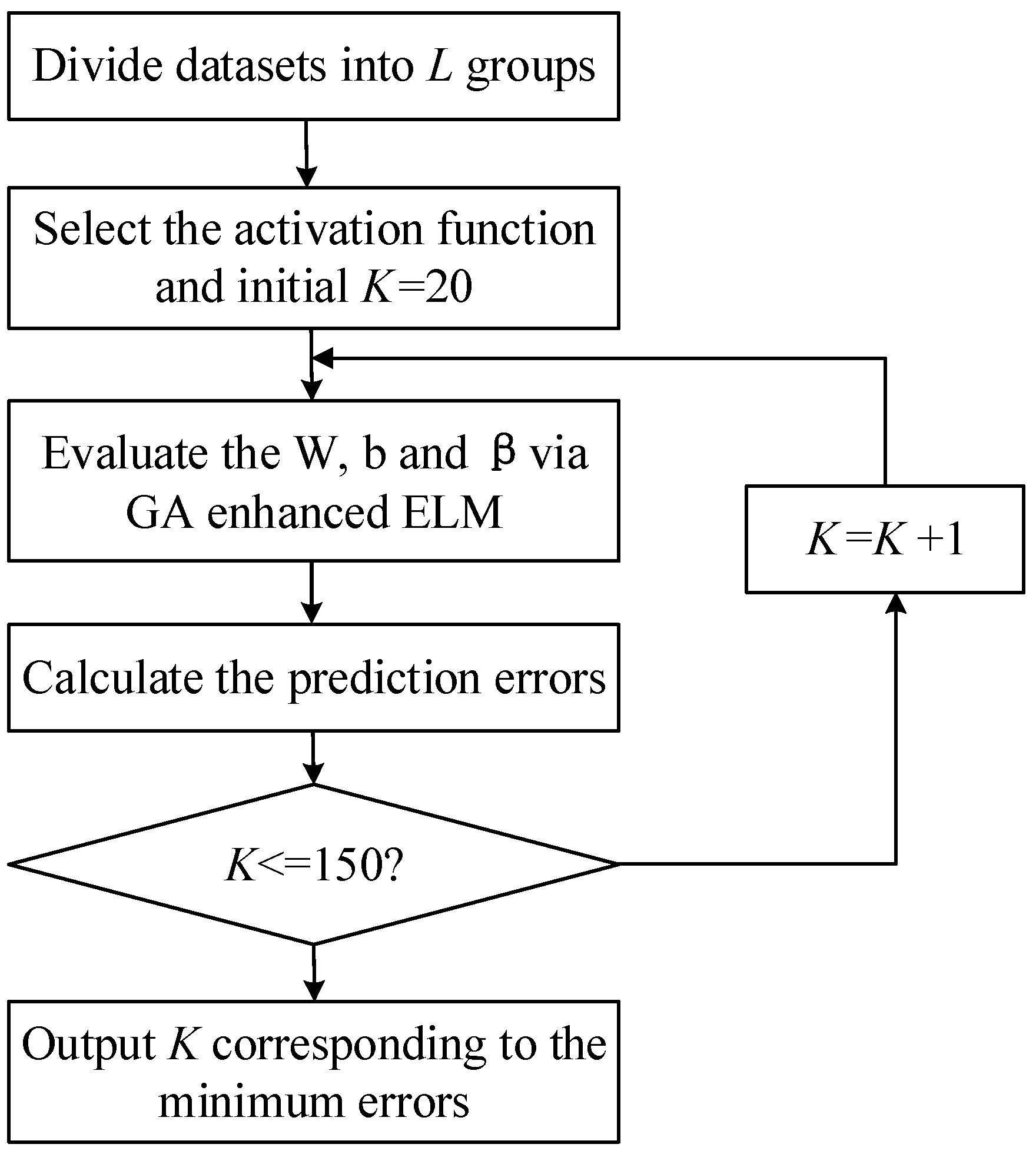
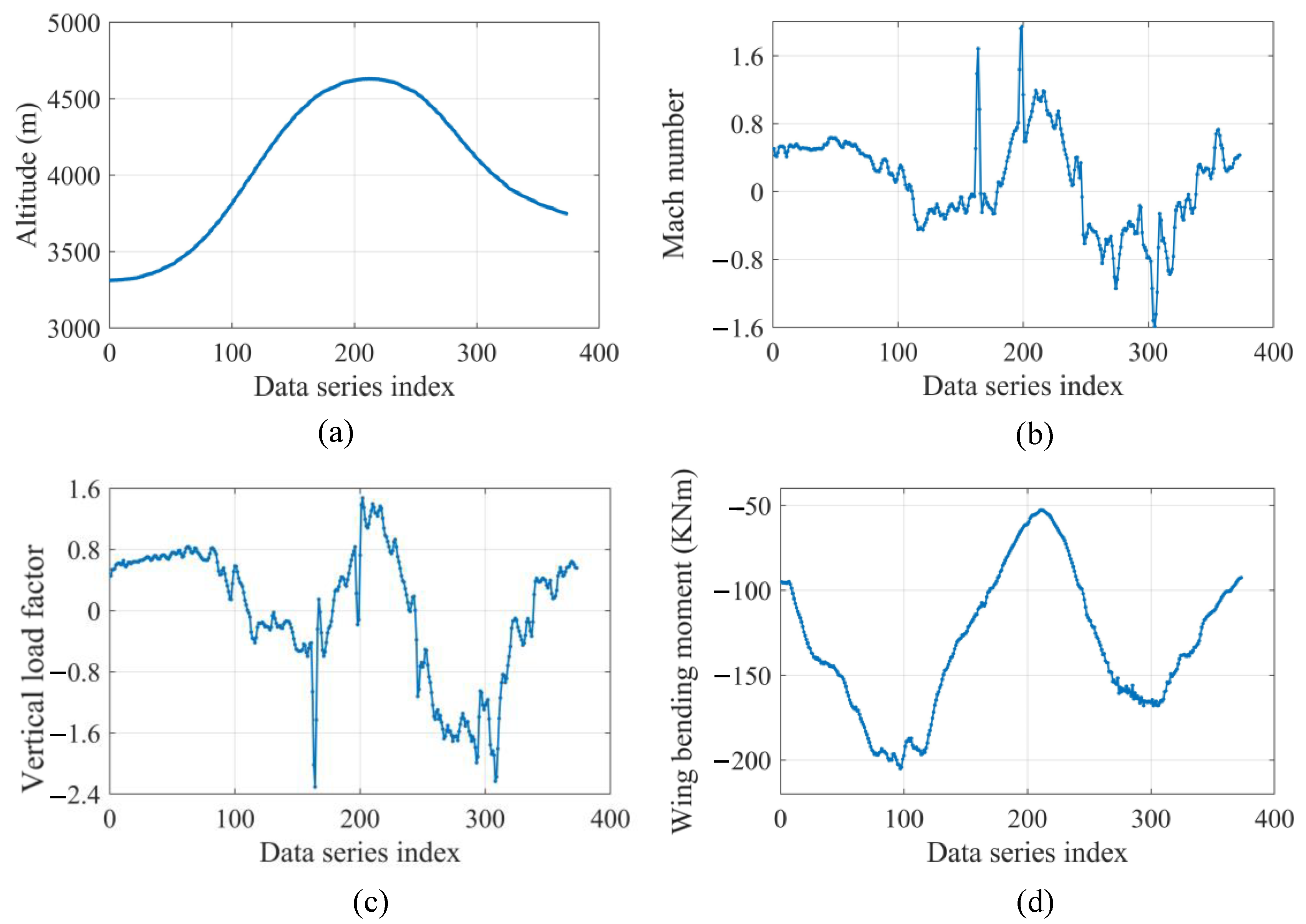
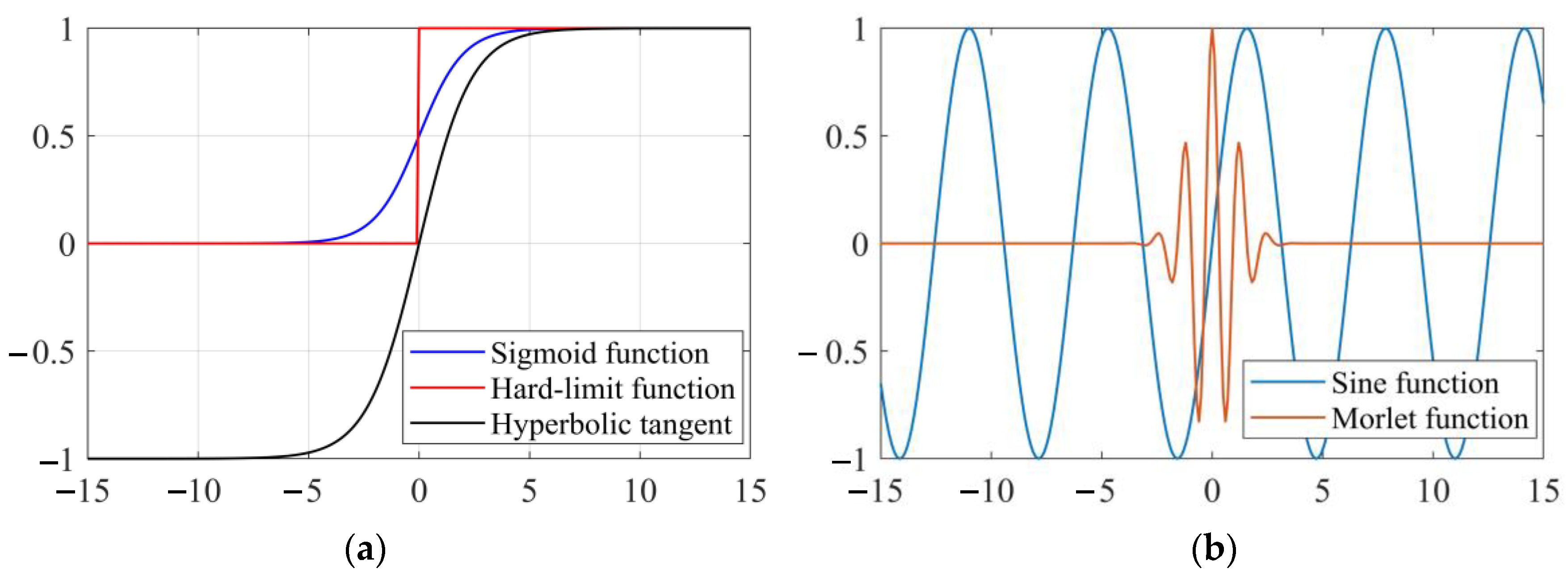
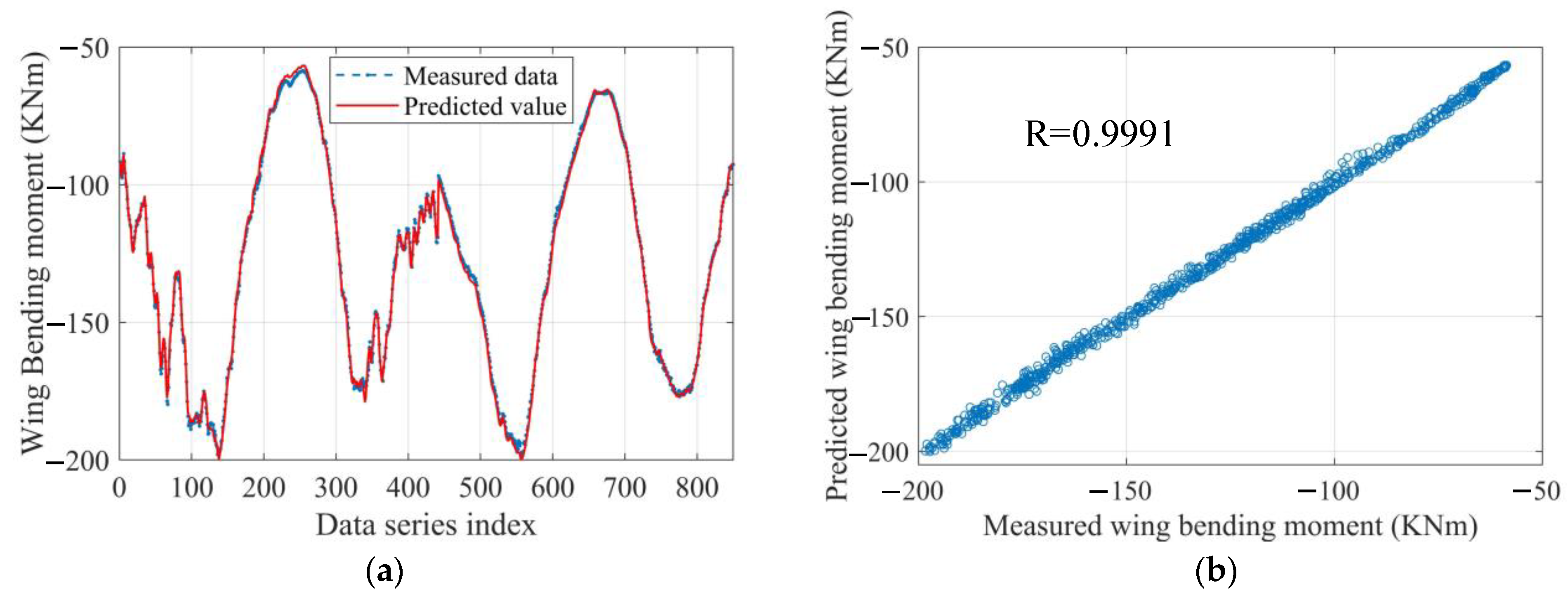
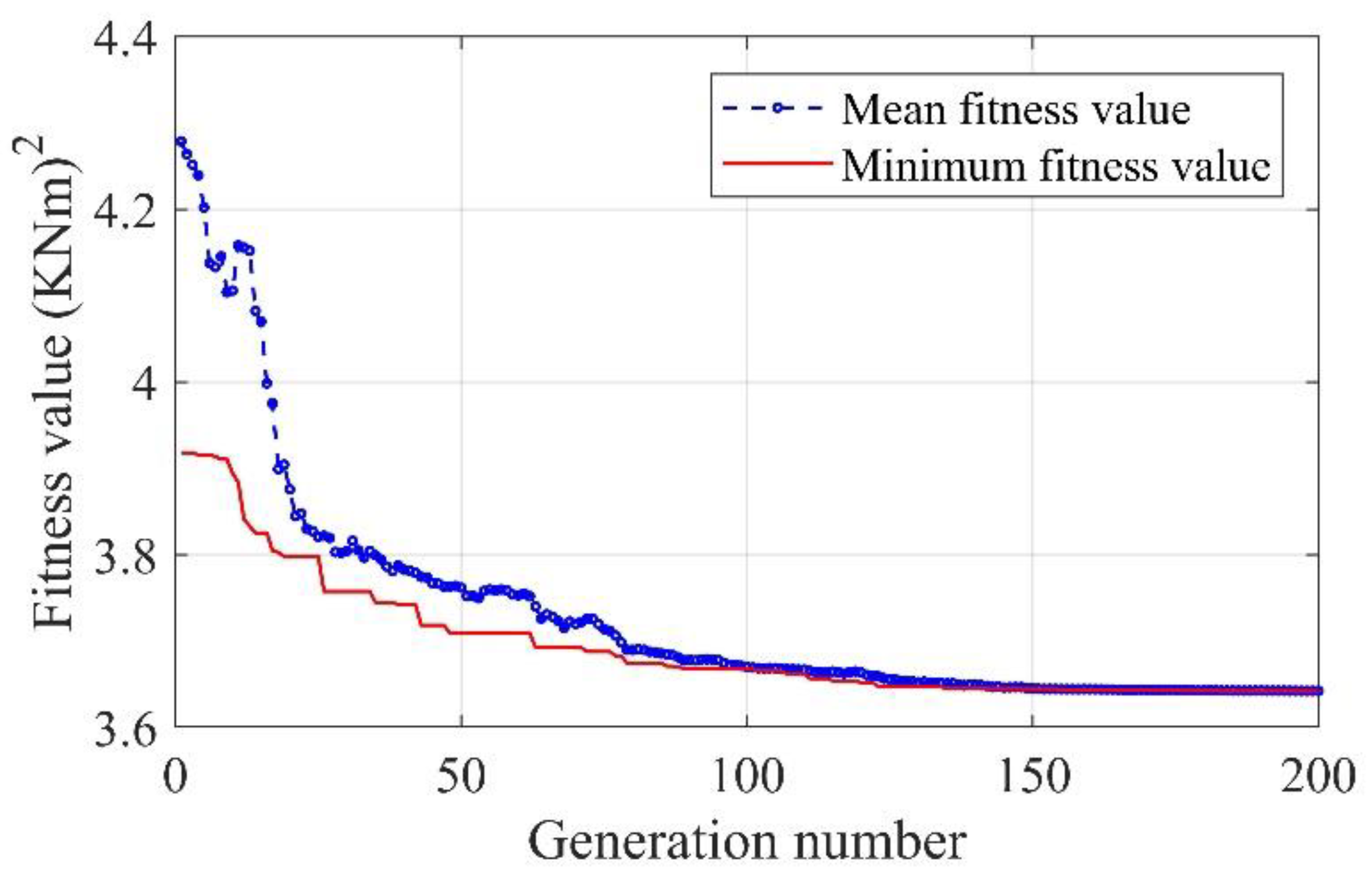
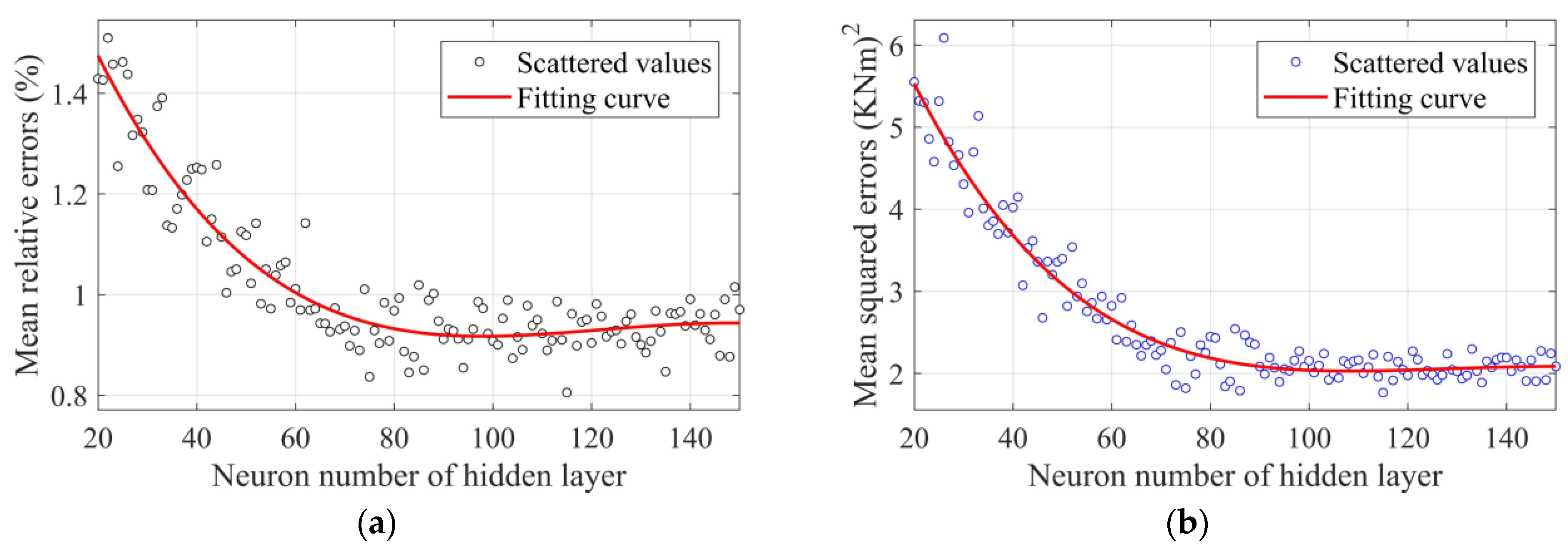
| Parameter Type | Parameter Setting |
|---|---|
| Population size | 20 |
| Max generation | 200 |
| Selection approach | Roulette wheel |
| Cross probability | 0.4 |
| Mutation probability | 0.2 |
| Stopping criteria | Maximum iteration steps |
| Activation Functions | Mean Relative Errors | Maximum Relative Errors | Mean Squared Errors |
|---|---|---|---|
| Sigmoid function | 1.0546% | 6.3417% | 2.9702 |
| Sine function | 1.3321% | 8.2345% | 4.3269 |
| Hard-limit function | 6.3217% | 32.0980% | 86.852 |
| Hyperbolic tangent function | 1.1769% | 4.5714% | 3.1849 |
| Morlet wavelet function | 8.3282% | 61.873% | 144.51 |
| Activation Function | Mean Relative Errors | Maximum Relative Errors | Mean Squared Errors |
|---|---|---|---|
| Sigmoid function | 0.8376% | 4.8627% | 2.0044 |
| Sine function | 0.9163% | 5.0318% | 2.0247 |
| Hard-limit function | 4.7941% | 31.943% | 54.027 |
| Hyperbolic tangent function | 0.9799% | 5.1406% | 2.41 |
| Morlet wavelet function | 3.8387% | 62.962% | 37.824 |
| Flight Parameter | MIV | Flight Parameter | MIV |
|---|---|---|---|
| Altitude | 0.0390 | Angle of right outer aileron | 0.0312 |
| March number | 0.0826 | Angle of left front flap | 0.0450 |
| Angle of attack | 0.1868 | Angle of left outer aileron | 0.0441 |
| Vertical load factor | 0.4449 | Angle of right inner aileron | 0.0648 |
| Roll rate | 0.0255 | Angle of left inner aileron | 0.0141 |
| Pitch rate | 0.0064 | Pitch angle | 0.0028 |
| Roll angle | 0.0127 | - | - |
| Neural Networks | Mean Relative Errors | Maximum Relative Errors | Mean Squared Errors | Training Time (s) |
|---|---|---|---|---|
| BP | 2.7909% | 15.5331% | 13.7988 | 7.2818 |
| RBF | 2.3006% | 11.093% | 13.769 | 3.6208 |
| SVM [51] | 2.2698% | 9.3018% | 13.3625 | 0.3033 |
| LSTM [52] | 1.3601% | 23.2184% | 4.6971 | 58.5525 |
| GRU [53] | 1.2323% | 5.4111% | 3.4670 | 58.5631 |
| ELM | 1.0546% | 6.3417% | 2.9702 | 0.1237 |
| GA-enhanced ELM | 0.8376% | 4.8627% | 2.0044 | 164.3014 |
Disclaimer/Publisher’s Note: The statements, opinions and data contained in all publications are solely those of the individual author(s) and contributor(s) and not of MDPI and/or the editor(s). MDPI and/or the editor(s) disclaim responsibility for any injury to people or property resulting from any ideas, methods, instructions or products referred to in the content. |
© 2023 by the authors. Licensee MDPI, Basel, Switzerland. This article is an open access article distributed under the terms and conditions of the Creative Commons Attribution (CC BY) license (https://creativecommons.org/licenses/by/4.0/).
Share and Cite
Zhang, Y.; Cao, S.; Wang, B.; Yin, Z. A Flight Parameter-Based Aircraft Structural Load Monitoring Method Using a Genetic Algorithm Enhanced Extreme Learning Machine. Appl. Sci. 2023, 13, 4018. https://doi.org/10.3390/app13064018
Zhang Y, Cao S, Wang B, Yin Z. A Flight Parameter-Based Aircraft Structural Load Monitoring Method Using a Genetic Algorithm Enhanced Extreme Learning Machine. Applied Sciences. 2023; 13(6):4018. https://doi.org/10.3390/app13064018
Chicago/Turabian StyleZhang, Yanjun, Shancheng Cao, Bintuan Wang, and Zhiping Yin. 2023. "A Flight Parameter-Based Aircraft Structural Load Monitoring Method Using a Genetic Algorithm Enhanced Extreme Learning Machine" Applied Sciences 13, no. 6: 4018. https://doi.org/10.3390/app13064018
APA StyleZhang, Y., Cao, S., Wang, B., & Yin, Z. (2023). A Flight Parameter-Based Aircraft Structural Load Monitoring Method Using a Genetic Algorithm Enhanced Extreme Learning Machine. Applied Sciences, 13(6), 4018. https://doi.org/10.3390/app13064018








